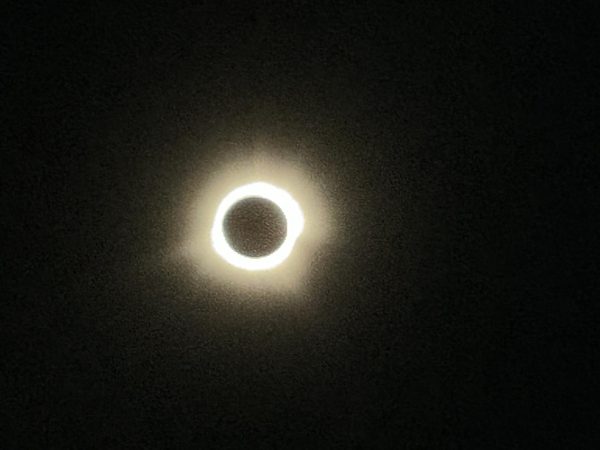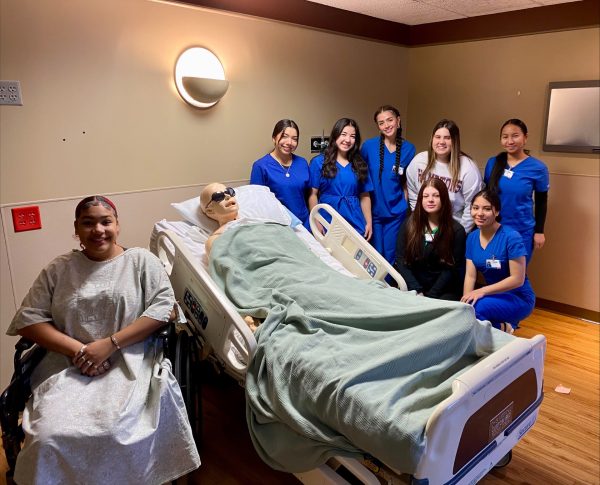An overview of the Trump presidency: Year Four 2020
2020 was the last year of Trump’s term in office, and would be the deciding factor for his political future. It would shape his legacy as the President, and would affect the future of the United States.
On Jan 3, the Department of Defense issued a statement confirming that they had killed Major General Qasem Soleimani. Soleimani was Iran’s top security and intelligence commander, and rumored to have been preparing to attack the United States with acts of terror. The order to assassinate Soleimani came directly from President Trump.
In retaliation of the assassination of Qasem Soleimani, Iran launched over a dozen ballistic missiles against U.S. and coalition forces in the Middle East on Jan 7.
On Jan 31, Trump signed an executive order, adding six countries to his travel ban. These countries being Nigeria, Myanmar, Eritrea, Kyrgyzstan, Sudan, and Tanzania.
On Feb 2, President Trump announced air travel restrictions between the U.S. and China. This was because of the first few cases of COVID-19 appearing in Washington State.
President Trump announced that Vice-President Mike Pence would be put in charge of the U.S. COVID-19 response on Feb 26.
As the pandemic grew more severe in the United States, President Trump signed the Coronavirus Preparedness and Response Supplemental Appropriations Act on March 6. This act would spend $8.3 billion to combat the pandemic.
On March 11, President Trump announced he would restrict air travel to Europe for thirty days. COVID-19 rates were skyrocketing in Europe, with Italy bearing the brunt of the pandemic. Banning air travel to Europe was an attempt to prevent the pandemic from spreading further in the U.S.
On March 13, President Trump declared a national emergency which would transfer nearly $50 billion in emergency funding. The money would go to hospitals and clinics to fight the pandemic.
President Trump would sign another piece of legislation to combat COVID-19, signing the Family First Coronavirus Response Act on March 18. The bill would provide additional unemployment benefits, free coronavirus testing, food and medical aid to people affected by the pandemic.
On March 27, President Trump signed the Coronavirus Aid, Relief, and Economic Security Act into law. The act was passed by the House previously the same day.
April 24, President Trump signed the Paycheck Protection Program and Health Care Enhancement Act. It would help refund money for programs under the CARES act.
On May 31, President Trump announced he would designate the far-left organization, ANTIFA, as a terrorist group. ANTIFA’s members are primarily made up of anarchists, communists, socialists, and anti-capitalists.
People in Hong Kong had been protesting since June 2019, demanding that Hong Kong remain politically separate from China. Showing his support for citizens of Hong Kong, President Trump signed the Hong Kong Autonomy Act, which placed economic sanctions on organizations in Hong Kong and China that undermined or worked against Hong Kong protesters on July 14.
On July 21, President Trump announced plans to deploy federal law enforcement to cities that were seeing massive rioting and looting. These riots were in response to the death of George Floyd, who was killed while being arrested by Minneapolis police officer Derek Chauvin on May 25. Protests for Black Lives Matter and anti-police brutality took place in most major cities in the United States.
On July 24, President Trump signed four executive orders designed to lower the cost of prescription drugs. An example of one of these drugs is insulin, which nearly 34.2 million Americans relied on.
On July 31, President Trump announced that he would ban Chinese social media app TikTok. TikTok was known to record data for the Chinese government, with some of this info being U.S. citizens’ location, browsing history, keystrokes, items saved to the clipboard, and many more private items. Trump, however, said that he would not ban it if a U.S. company owned it. On September 21, Walmart and Oracle bought stakes in the company, meaning that it would not be banned in the U.S.
On Aug 13, President Trump brokered a peace deal between the United Arab Emirates and its ally, Israel. This was the first peace deal between Israel and an Arab-Muslim nation.
Sep 11, President Trump announced that a second peace deal had been successfully brokered, this time between Bahrain and Israel. This was the second peace deal in less than a month.
On Sep 17, President Trump signed the 1776 Commission Act, an education program designed to teach students to be pro-american, and hide past atrocities committed by the United States.
On Sep 18, President Trump nominated Justice Amy Coney Barrett to the Supreme Court. This was following the death of Supreme Court Justice Ruth Bader Ginsburg, who had served on the Supreme Court from 1993 to 2020.
On Sep 29, President Trump and former Vice President Joe Biden took part in the first U.S. Presidential Debate, held at the Case Western Reserve University, Cleveland, Ohio. There was little debate taking place, as both politicians launched insults at each other.
The final Presidential Debate took place on Oct 22, this time at Belmont University, Nashville, Tennessee. This debate was much like the previous one, with names being thrown around the room.
On Oct 23, President Trump brokered a third peace deal for Israel, this time with Sudan.
On Nov 1, President Trump held five rallies, moving quickly from Michigan, Iowa, North Carolina, Georgia, and Florida. This was two days before the U.S. presidential election.
Nov 3, the U.S. presidential election was held; however, no winner could be finalized on Election Day. The House of Representatives won the majority on the 3rd and kept it for the second straight election cycle by the Democrats. The Republican Party won the Senate and the Democratic Party won the House by the slimmest of margins. In the Senate, the Republicans had 50 members, while Democrats had 48, with two independents. Vice-President Kamala Harris, being the President of the Senate, also has a vote, giving the Democratic Party 49 members. The Democratic Party have 218 members in the House, while the Republicans have 211 members, and six independents.
On Nov 4, no winner could be finalized, with eight states still counting election ballots as they arrived. These states included Alaska, Arizona, Georgia, Michigan, Nevada, North Carolina, Pennsylvania, and Wisconsin.
On Nov 6, President Trump joined Joe Biden as the second U.S. presidential candidate to reach 70 million votes. Joe Biden at the time had received 74 million votes.
On Nov 7, a winner of the 2020 presidential election winner was determined, with the winner being Joe Biden. President Trump did not concede defeat.
On Dec 2, President Trump released a 46 minute speech talking about how the election was stolen from him on all of his social media platforms. He had contested the results of the election since Joe Biden had been projected the winner of the election.
On Dec 10, a fourth peace deal had been brokered between Israel and an Muslim nation, this time being Morroco.
President Trump finally conceded defeat on Dec 11, acknowledging that there will be a Biden administration on Jan 20.
On Dec 22, President Trump announced that he would not sign the new $900 billion COVID-relief bill. This was due to the small amount of money that Americans would receive in aid, with Americans only receiving $600 per family member. President Trump argued that it should be increased to $2,000 per American. It also included a huge amount of pet projects, including $15 billion for grant programs for live entertainment, $500 million to Israel missile defense systems, $250 million for Palestian economic aid, $10 million for gender programs in Palestine, the construction of several museums, $700 million for economic development in Sudan and many more.
On Dec 27, despite Trump calling the COVID-relief bill a “disgrace,” he signed it, avoiding a government shutdown.
The infamous Capital Riot was held on Jan 6, where a pro-Trump rally broke into the capital building and stormed several rooms and offices of politicians and government workers. The rioters aimed to halt the certification of the election results, and caused martial law to put in place in Washington D.C. The National Guard was deployed to the Capitol and a fence was constructed around the building. In response, President Trump was banned on every social media platform including Facebook, Instagram, and Twitter.
The riot did not prevent the certification process from proceeding. Vice-President President-elect Joe Biden certified was the winner of the 2020 Election.
President Trump condemned the capital riot that took place, and requested that everyone go home peacefully and remain non-violent. He would also concede the election results after the certification process concluded.
On Jan 13, the House impeached President Trump on charges of Indictment of Insurrection. He would become the first president to be impeached twice.
Jan 20, Donald Trump left the White House for the final time. He boarded Marine One and flew to a nearby airfield. There he boarded a private jet, and flew home to Florida.
At noon on Jan 20, President-elect Joe Biden is sworn into office. He is the oldest President in U.S. history, serving at the age of 78. His Vice-President, Kamala Harris, is the first female Vice-President, and is only the second vice-president of color in U.S. history.












